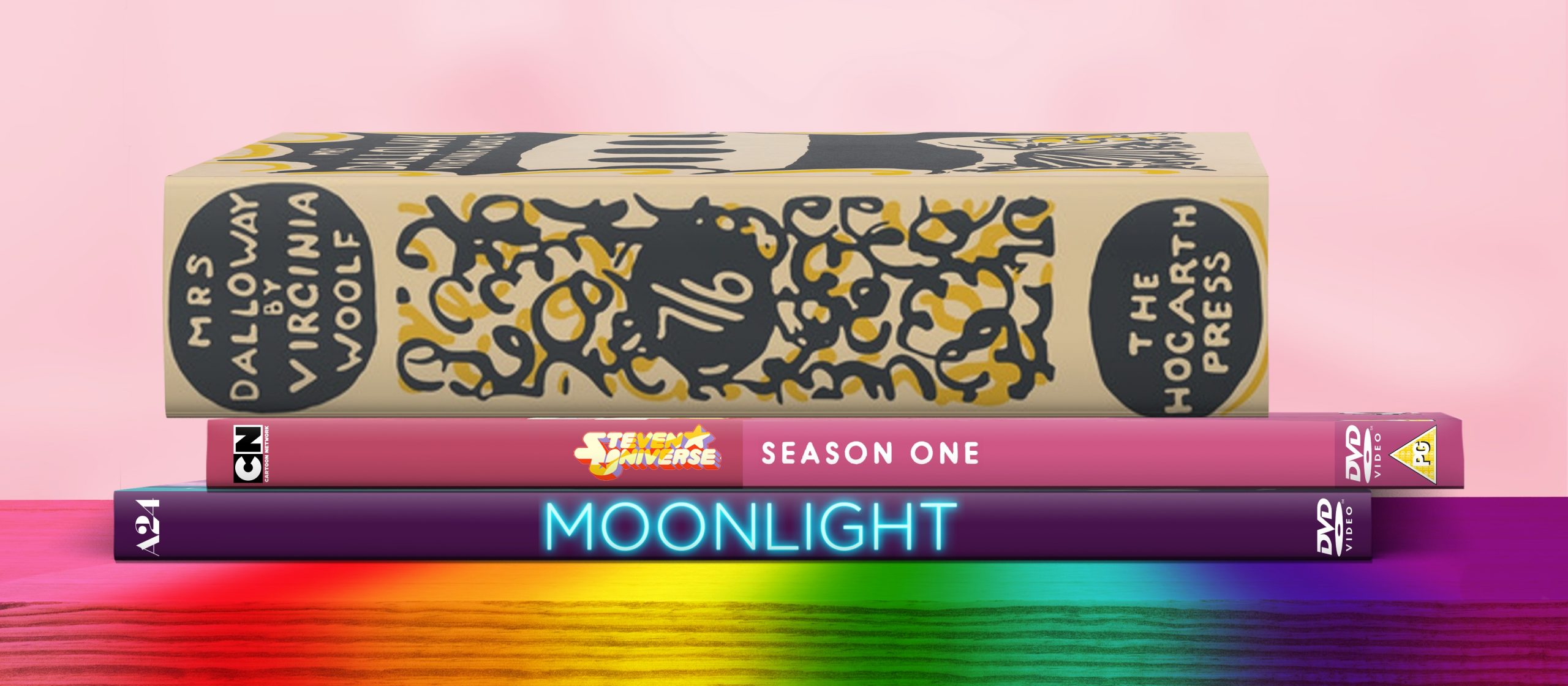Graphic by Christopher Ikonomou (Xe/He)
This article was originally published in our Spring 2022 print issue “Reflections of Radiance.“
Throughout the past century, media that portrays and represents queerness and queer relationships have changed for the better.
When looking at earlier 20th-century queer works, the tone is rather drab, with an understanding that queerness isn’t allowed to be something that is happy or something that leads to happy ends. And, for the majority of situations at the time, there wasn’t happiness in life as a queer person either.
Consider the novel, “Mrs. Dalloway” by Virginia Woolf, a renowned lesbian writer of the early 20th century. There is an underlying unhappiness present within the protagonist’s life. This unhappiness of Mrs. Dalloway and her inability to reach her desires throughout the novel is reminiscent of the way in which queer individuals would often live lives that weren’t lived to their fullest. After all, in the United States, queer individuals weren’t granted the ability to be together until 2015, at least not within a legal marriage.
Looking at more present-day media, such as the 2017’s Oscars Best Picture winner, “Moonlight,” there is a happier portrayal of the way in which queer relationships and people can exist. Throughout the film, the protagonist is given the opportunity to live and remain happy, albeit not with their lover.
The importance of providing this representation of queer happiness can’t be understated, as it shows the ability to achieve happiness, even as a queer individual.
Furthermore, the evolution of queer happiness can be seen with the progression of queer rights in United States politics. With the uprisings at the Stonewall Inn, Cooper Do-nuts, and Compton’s Cafeteria, there were and continue to be voices that uplift the queer community.
Although there is still needed progress regarding politics involving the queer community, queer media becoming more positive is a step in the right direction. With the passage of time and the normalization of queerness, we have been allowed to provide more policy that supports queer people. The way that media and policy are intertwined can’t be understated either, as seen with legislation such as the notorious Hays Code which effectively banned homosexuality from film. The lifting of the Hays Code was then followed by uprisings such as those aforementioned, and I can’t help but think there’s a connection there.
In order for there to be better representation that shows the ability for queer happiness to exist, it is essential that people who are queer tell their stories. Stories provide a spotlight on the life of queer individuals who have gone through the motions and been in the shoes of somebody who isn’t sure about who they are. They provide a gateway into a possible happiness that people might not have previously thought feasible.
Queer joy in media is reflective of the possibility to have queer joy in the real world. In order for this to exist, we must also push for policy and culture that stands up for the right of queer people to simply be, to be able to live a life that they desire. To have their “Moonlight” moments and not just their Dalloway ones.
Through this representation of happiness, like the relationship between Ruby and Sapphire in “Steven Universe,” it can persist into the world outside of media representations.
Tell friends, tell family members, tell everybody! Let the people know about queerness and show them it is something that simply is, that there need not be a moral judgment made regarding it. Through the rising popularity and production of queer media, there is a possibility for normalization of this queerness and thus, a normalization of there being happiness as a queer person.
Normalizing the idea of queer happiness within our own lives and in our media is one step toward more possibilities of queer happiness existing without the worry of persecution by other groups.
Credits:
Author: Kaitlyn Germann (She/Her)
Artist: Christopher Ikonomou (Xe/He)
Copy Editors: Bella (She/They), Brooke Borders (She/Her)

